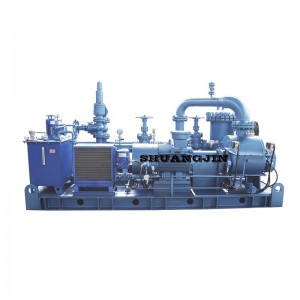Progressing cavity pumps are widely used across industries due to their ability to handle a wide range of fluids, including viscous and shear-sensitive materials. However, like any mechanical equipment, they require regular maintenance to ensure optimal performance and longevity. In this blog, we will explore basic maintenance tips for progressing cavity pumps and draw on the advanced technology of multiphase twin-screw pumps, a product developed by a leading manufacturer in the pump industry.
Learn the basics of single screw pumps
The working principle of a progressive cavity pump is simple: a spiral screw rotates within a cylindrical housing, creating a vacuum that draws fluid into the pump and then discharges it. This design allows for smooth, continuous fluid flow, making it ideal for applications such as food processing, chemical manufacturing, and oil transfer.
Single screw pump maintenance tips
1. Regular Inspection: Schedule routine inspections to check the screw, housing, and seals for wear. Any signs of leakage or unusual vibrations may indicate a problem.
2. Lubrication: Make sure the pump is adequately lubricated. Use the manufacturer's recommended lubricant and lubricate at the prescribed intervals to prevent friction and overheating.
3. Monitor Operating Conditions: Pay close attention to operating temperature and pressure. Deviations from recommended levels may cause premature wear or failure.
4. Cleanliness is key: Keep the environment around the pump clean. Dust and debris can get into the pump and cause damage. Clean the outside of the pump regularly and make sure the water inlet is unobstructed.
5. Seal Maintenance: Regularly inspect seals for signs of wear. Worn seals can cause leaks, which not only waste product but can also pose a safety hazard. Replace seals as needed to maintain efficiency.
6. Fluid Compatibility: Make sure the fluid being pumped is compatible with the material the pump is made of. Incompatible fluids may cause corrosion to pump components or degraded performance.
7. Vibration Analysis: Monitor pump performance using vibration analysis tools. Abnormal vibration patterns may indicate misalignment or imbalance and should be addressed promptly.
8. Training and Records: Make sure all personnel operating the pump are trained in maintenance and operation. Keep detailed maintenance records so that you can track the performance of the pump and detect potential problems early.
Learning from Multiphase Twin Screw Pumps
While single screw pumps are efficient, advances in pump technology, such as multiphase twin screw pumps, offer additional advantages. Developed by a leading Chinese manufacturer, multiphase twin screw pumps are designed to handle multiphase oil flows, making them suitable for more complex applications. The design and configuration of these pumps improves efficiency and reduces maintenance requirements.
By understanding the principles behind multiphase twin-screw pumps, operators of single-screw pumps can gain insight into how to optimize maintenance practices. For example, both pump types emphasize regular inspection and monitoring, which highlights the importance of proactive maintenance.
in conclusion
Maintaining a progressing cavity pump is essential to ensure its longevity and efficiency. By following these maintenance tips and drawing on advances in pump technology, operators can improve pump performance and reduce the risk of unexpected failures. As a specialist manufacturer with strong R&D capabilities, the company behind the multiphase twin screw pump embodies the importance of innovation in the pump industry, paving the way for more efficient and reliable pumping solutions.
Post time: Jun-03-2025

